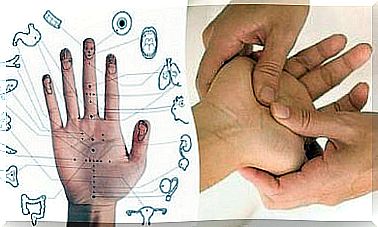Static Electricity: What Is It And What Are Its Health Risks?

Static electricity can occur almost anywhere and anytime. Occurs when the charges have accumulated on one object and dissipates to another with a smaller charge, with which it comes into contact.
In a factory, in the office, at home, when we shake someone’s hand, we touch a doorknob, a surface… a spark suddenly jumps. Static electricity is not always harmless.
Directly, the discharge itself is not dangerous, but can be associated with harmful circumstances (explosion or fire when there are flammable materials or a work accident due to sudden movement).
What is static electricity?
Static electricity is a form of electricity. It is produced by the accumulation of energy in a certain material. Whether they are conductive or not, bodies have the ability to absorb and retain a stationary electric potential.
In static electricity, electrons travel through the body, reaching its edge. Instead, when electrons flow from one end to the other in a body, electricity is dynamic.
Static electricity manifests itself in the form of discharges when an object that has more energy comes into contact with another with a lower charge. The spark appears, often visible. This discharge is minimal and does not exceed 0.005 amps.
The human body is a good conductor of electricity and also a battery. Strange as it may seem, it can store a large amount of energy. If it does not reach 4000 volts, no sparks will appear.
Accumulation depends on several factors:
- The wider the movement, the greater the load.
- Certain physical characteristics of the person (for example, excessive sweating or hyperhidrosis).
- Contact with susceptible bodies.
- Proximity to electric fields generated by charged bodies.
- Humidity in the environment.
- Clothing, because synthetic fibers promote the accumulation of loads.
- Floor type (a common problem with parquet).

How static electricity is produced
All elements generate static electricity, regardless of their state: solid, liquid or gaseous. Normally, in bodies there is a similar charge between electrons (negative) and protons (positive). This means that the neutral state is maintained, which is electrically stable.
Static electricity is produced when two bodies change their charges. That is, an imbalance in electron transfer occurs.
This can happen in several ways:
- By friction or friction between materials of different composition or nature. One loses and the other gains electrons. This is seen in the hairbrush.
- By contact: when two objects approach or maintain contact with each other, one can be positively charged and the other negatively charged. In other words, electrons move from one body to another.
Among the materials with the highest capacity to produce static energy by friction are glass, nylon, polyester, polyurethane, acrylics and Teflon. The amount of static electricity produced by contact is much smaller than that generated by friction.
Health risks of static electricity
Static electric discharges are low in terms of amperage, so they are not dangerous to health. At least not directly.
In many cases, we will feel a slight discomfort similar to a cramp, a small spasm or a slight scare. But in some people, certain symptoms may appear that suggest an allergy to electricity.
On the other hand, in patients with pacemakers and other implantable devices, electric shocks can cause transient interference.
In addition, static electricity has been linked to a condition known as semicircular lipoatrophy . Adipose tissue is affected, with depressions in the front and sides of the thighs. However, there is insufficient evidence to that effect.
Occupational hazards
In the industrial field, there are various activities that can generate electric discharges. For example, the circulation of a fluid at high speed through a pipe, emptying the grains in a silo, painting with a high pressure atomizer.
Different risk situations associated with static electricity are observed in the work environments. First of all, if the phenomenon occurs very frequently, it can generate a feeling of discomfort.
In some tasks, an electric shock presents major risks. For example, if the person works at height, a sudden movement that increases the chances of a fall.
In addition, in environments with a risk of fire or explosion, where there are flammable gases or substances (butane, propane, gasoline, alcohol), an electrical spark can lead to a fatal accident.

Precautions
The first and most important measure should be to eliminate the possibility of static electricity generation. To this end, the control of variables that contribute to the recombination of tasks is essential.
This depends on several factors:
- Conductivity of materials: a faulty insulator or conductor does not contribute to the circulation of accumulated loads. Rather, dissipative materials should be chosen.
- Workers’ clothing: must be made of antistatic fabrics, avoiding synthetic materials.
- Dehumidifiers: in environments with high relative humidity, water molecules settle on materials, increasing their conductivity.
- Use of antistatic floors.
- Use of air ionization equipment in work spaces, where necessary.
- Grounding electrical devices in contact with the floor.
Watch out for static electricity
In an office or home, touching objects that cause electric shock is often a cause for discomfort. In a factory or workshop, where there are dangerous substances (toxic, flammable or explosive), the risks may be higher. For this reason, appropriate prevention and protection measures must be taken for workers, in accordance with legal provisions.
It starts with a risk analysis and assessment. Then, the necessary actions and mechanisms are established to control and reduce the factors that generate discharges.
Finally, don’t forget the human factor. Along with all these measures, training and information on occupational safety and health standards are essential.









